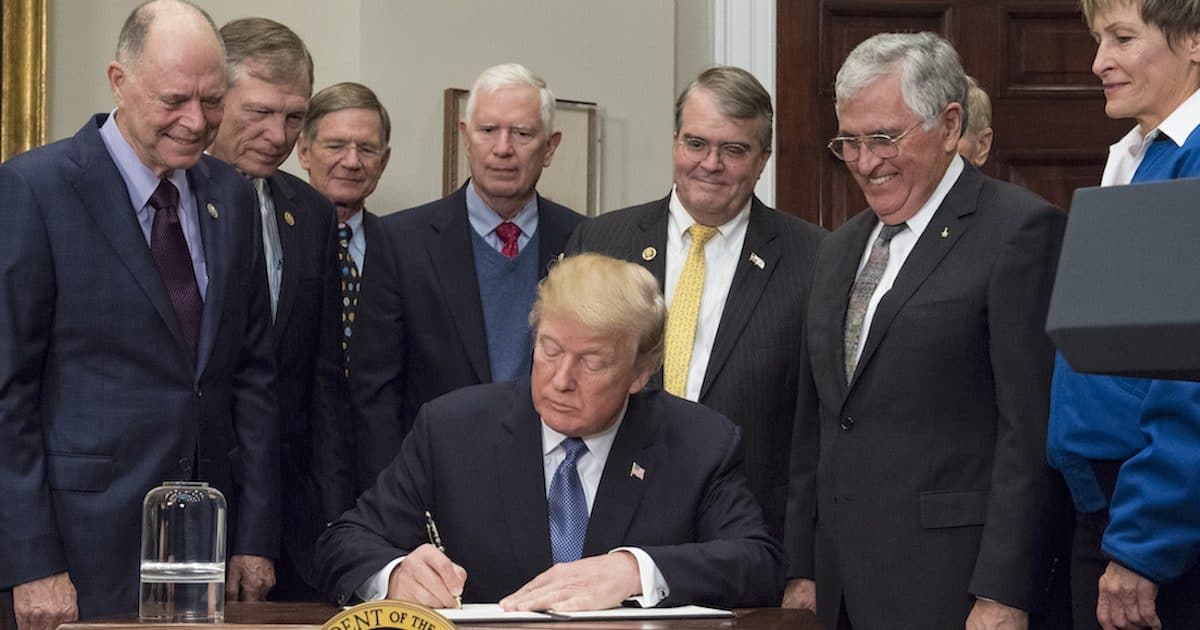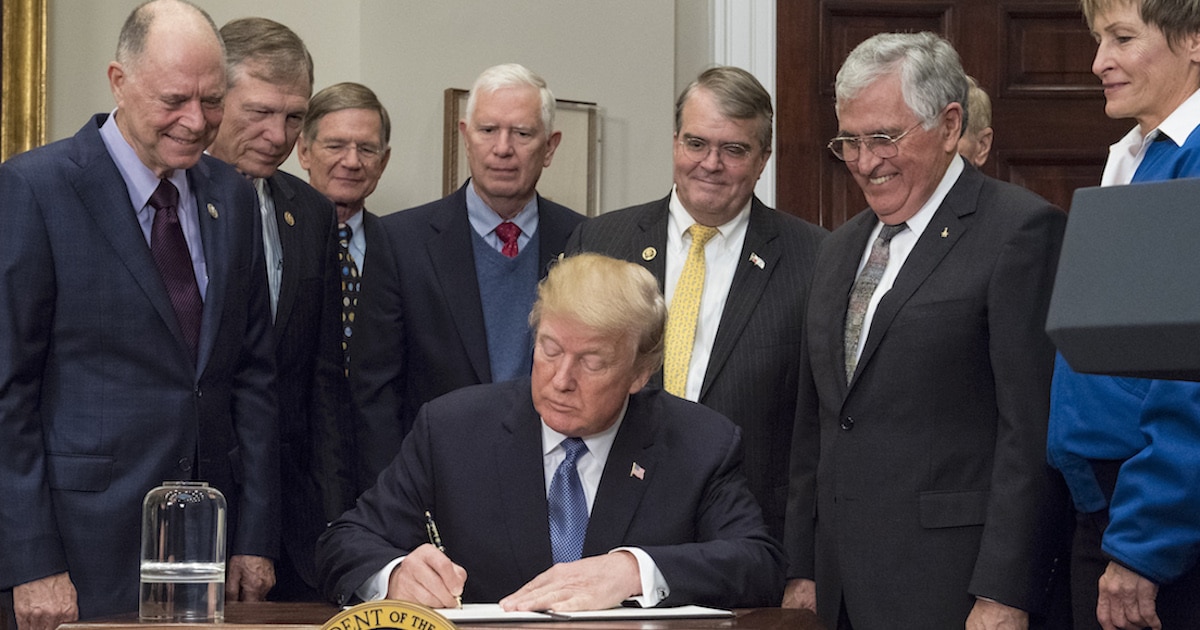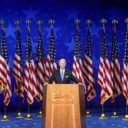
National Defense Authorization Act for FY 2019 Includes Border Security Win for White House

The U.S. House passed the National Defense Authorization Act (NDAA) for Fiscal Year (FY) 2019, establishing the U.S. Space Force and paid family leave for federal workers. The 377-48 vote moves the $738 billion bill to the U.S. Senate over the objection of 41 Democrats, mostly leftwing progressives.
| YEAS | NAYS | NV | |
| DEMOCRATIC | 188 | 41 | 3 |
| REPUBLICAN | 189 | 6 | 2 |
| INDEPENDENT | 1 | ||
| TOTALS | 377 | 48 | 5 |
The initial version of the bill failed in July. Republicans opposed a provision that would’ve blocked the president from funding border security. The final version of the bill represents a big win for the White House and House Republicans.
The final compromise removed a number of leftwing progressive provisions. Putting aside the wisdom of those policies, they would’ve met fierce opposition in the Republican-controlled U.S. Senate.
Those provisions now removed included:
- Reverse the president’s transgender military ban,
- Prohibit the president from taking U.S. military action against Iran,
- End U.S. support for the Saudi-led war in Yemen,
- Force the cleanup of “forever chemicals” called PFAS,
- Block the deployment of the low-yield nuclear warhead; and
- Prohibit new transfers of detainees to Guantánamo Bay.
President Donald J. Trump, who uncharacteristically of a Republican campaigned on childcare reforms, said that he would sign the compromise version of the bill immediately.
“Wow! All of our priorities have made it into the final NDAA: Pay Raise for our Troops, Rebuilding our Military, Paid Parental Leave, Border Security, and Space Force! Congress – don’t delay this anymore!” President Trump tweeted. “I will sign this historic defense legislation immediately!”
U.S. Space Force Background and Timeline
Though it hasn’t received much media attention, President Trump has already established himself as a consequential leader in space exploration.
In his first 100 days, he signed the National Aeronautics and Space Administration Transition Authorization Act of 2017. Then-acting NASA Administrator Robert Lightfoot said it was vital for “our nation’s space, aeronautics, science, and technology development programs to thrive.”
In June 2017, the president revived the National Space Council for the first time in 24 years. Led by Vice President Mike Pence, the Council is empowered to help implement his space policy, one that makes human exploration of the solar system a national priority.
In December 2017, President Trump signed Space Policy Directive 1, establishing a public-private partnership for human missions to the Moon, Mars and beyond. NASA said the directive would lay the foundation that will eventually enable human exploration of Mars.
In May 2018, the president signed Space Policy Directive – 2, which reformed U.S. commercial space regulatory framework with a goal to ensure the nation maintains its role as a leader in space commerce.
In June 2018, President Trump signed Space Policy Directive-3 instructing Joint Chiefs of Staff Chairman General Joseph Dunford to create a sixth branch of the U.S. military — U.S. Space Force.
In February 2019, the president signed Space Policy Directive-4 instructing then-Acting Secretary of Defense Patrick M. Shanahan to develop a legislative proposal.
The final part of that four-part directive required approval from the U.S. Congress. The NDAA grants that approval and funds the framework for the new and sixth branch.
The U.S. Space Force will start as an agency of the U.S. Air Force similar to the U.S. Marine Corps under the U.S. Navy. It will be led by the chief of space operations, who will report directly to the Secretary of the U.S. Air Force. That person will become a member of the Joint Chiefs of Staff.








Anonymous / December 12, 2019
The purpose of Space Policy Directive 3 is misstated. It is a National Space Traffic Management Policy. President Trump directed formation of the space force at the same Space Council meeting where SPD-3 was signed, but they are otherwise not related.
/
Mr. Boho / December 13, 2019
Thanks for finally talking about >House Passes NDAA to Establish Space Force, Paid Family Leave for Fed Workers | People’s Pundit Daily <Loved it!
/